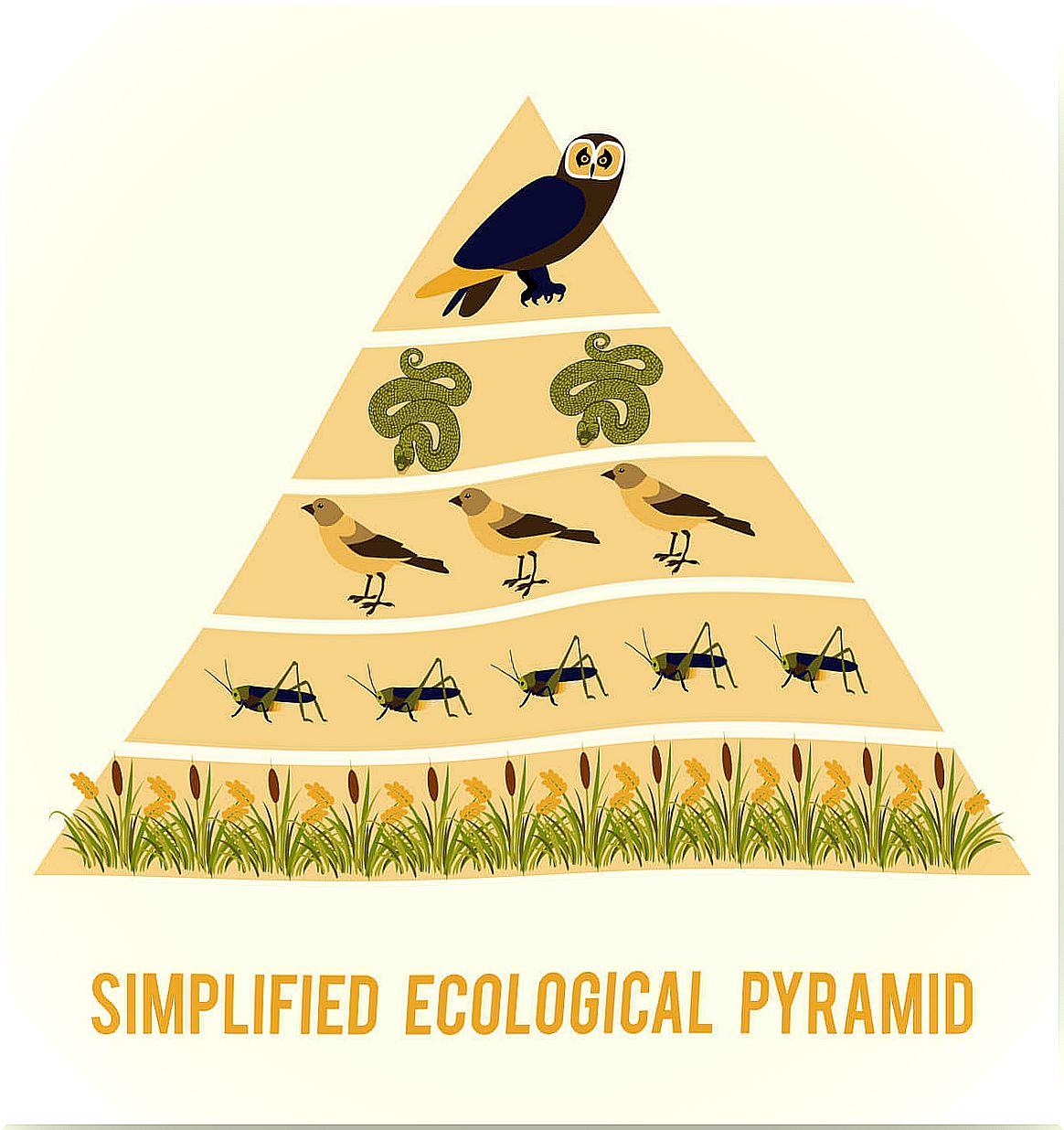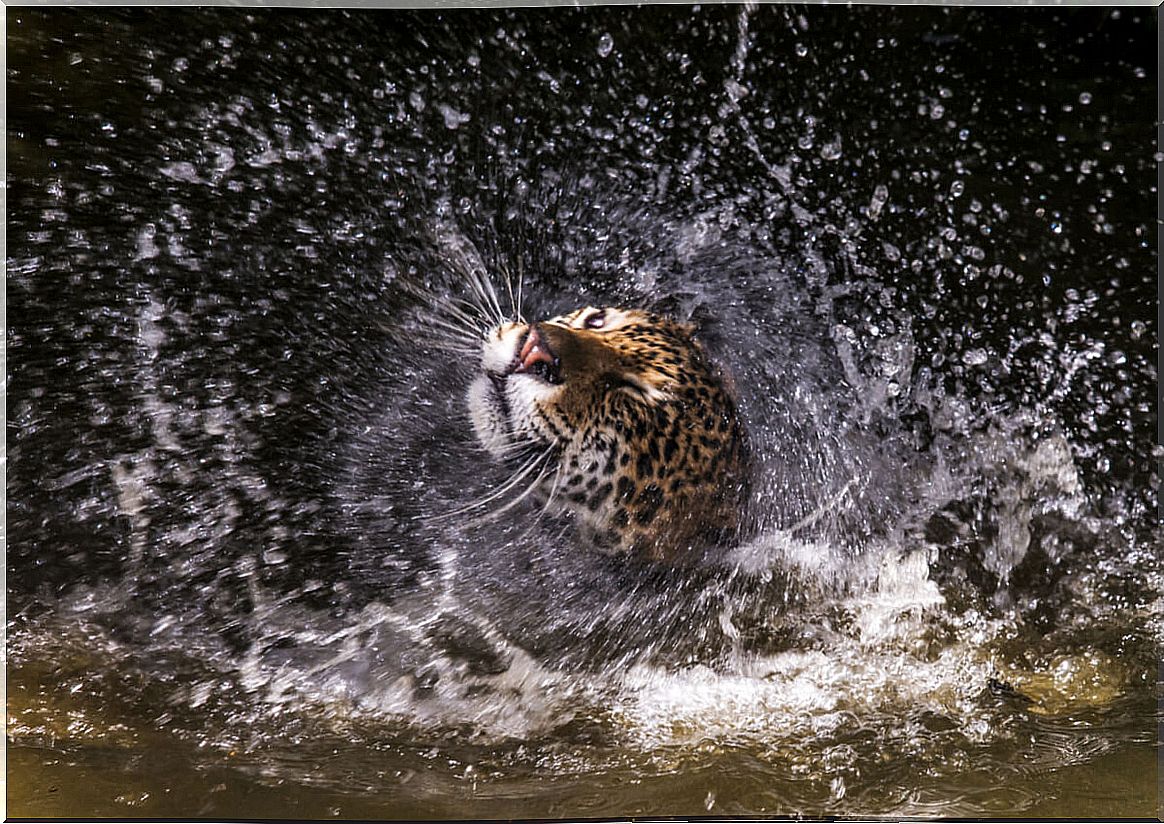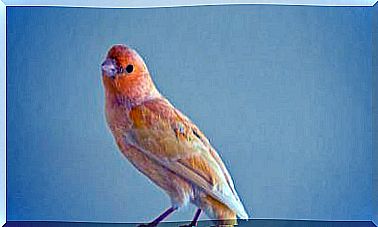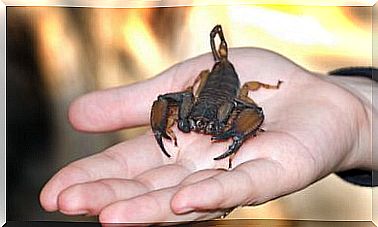Why Are Predators Important In The Ecosystem?

Predators are the end of the food chain, the top of the pyramid of food relationships that animals establish. While this has been the prevailing idea for decades, many ecologists warn us of the complex role of predators in the ecosystem.
Predators are capable of regulating the other components of the ecosystem and as a result they perpetuate food webs over time. Read on if you want to know more about this fascinating biological balance based on the hunter-prey relationship.
Predators and food chains
We all have in mind the classic image of the food chain that we were taught in school. The grass grows and is eaten by rabbits, which in turn are eaten by foxes. Under this simple explanation, there is a huge and dense mesh of food webs that, as a whole, shape the ecosystem.
The classical theory: the bottom-up
According to classical theory, what determines the regulation of trophic chains is the availability of nutrients. Based on this, the abundance of primary producers – plants and algae – would determine the density of primary consumers – herbivores. In turn, these would have an influence on the number of predators.
Thus, we can see how the number of predators would completely depend on the primary producers. The classical or bottom up theory – from bottom to top – assumes that regulation goes from the base of the trophic pyramid to the top.

The top-down or the importance of predators
In the 1980s, new studies began to turn the classical “bottom-up” theory on its head, pointing to the enormous importance of predators in regulating food chains. Next, we will present some cases where food webs are regulated by predators.
Sea otters, urchins and kelp : the discovery of trophic waterfalls
James Estes is a renowned marine zoologist who, in the 1990s, studied the kelp forests off the coast of Alaska. The kelp is a seaweed of enormous size, which can form true underwater forests, which are home to a rich biodiversity.
This scientist was able to verify that, in the areas where there were no otters, the kelp forests were in very poor condition, compared to those places where these mammals of aquatic habits were present.
After years of research on the matter, Estes formulated his theory: the presence of otters regulated the populations of sea urchins, which prevented them from overeating the kelp algae . In a total departure from classical ecological theories, Estes was able to test the top-down or trophic cascade theory .
This hypothesis proposes that, in many cases, predators determine the abundance of primary producers, since their regulatory action is crucial to keep herbivores at bay.
The wolves of Yellowstone: saving a unique ecosystem
As we have seen, in many cases the good health of an entire ecosystem depends on the presence of predators that regulate herbivores. Also, another well-known case of this is what happened in Yellowstone National Park (USA), with wolves.
The wolves in Yellowstone have disappeared by human action since the beginning of the 20th century. As a consequence, the moose population increased considerably, to the point that the park’s grasslands were severely degraded. This caused that many animals that ate plants or fruits were affected, such as the brown bear.
After numerous studies, the wolves were reintroduced in 1995. Today, the presence of the wolf in Yellowstone has brought incredible benefits to the ecosystem of the park. Not only the moose population is controlled -improving the status of plants-, but has led to the conservation of other species, such as bears Grizzlie .
Predators in restoration projects
Thus, we can see the very important work that predators have on ecosystems, since they directly or indirectly control the top-down processes that favor the regulation of the number of primary consumers.
Such is their importance that they are considered one of the pillars of renaturation or rewilding . The rewilding is to return to certain ecosystems as natural a state as possible, by seeking the restoration of those who have lost natural ecological processes.
Among these ecological processes, how could it be otherwise, are trophic chains, which are intended to restore through the introduction of predators.

Predators: keys to food webs
Thus, in conclusion we can say that the presence of predators is key to the health and proper functioning of trophic networks, as many studies and experiences have shown.
Therefore, their conservation should be a priority in those places where they are reduced by human action and should be reintroduced to promote trophic regulation and good ecosystem health. In nature, every living thing counts.









